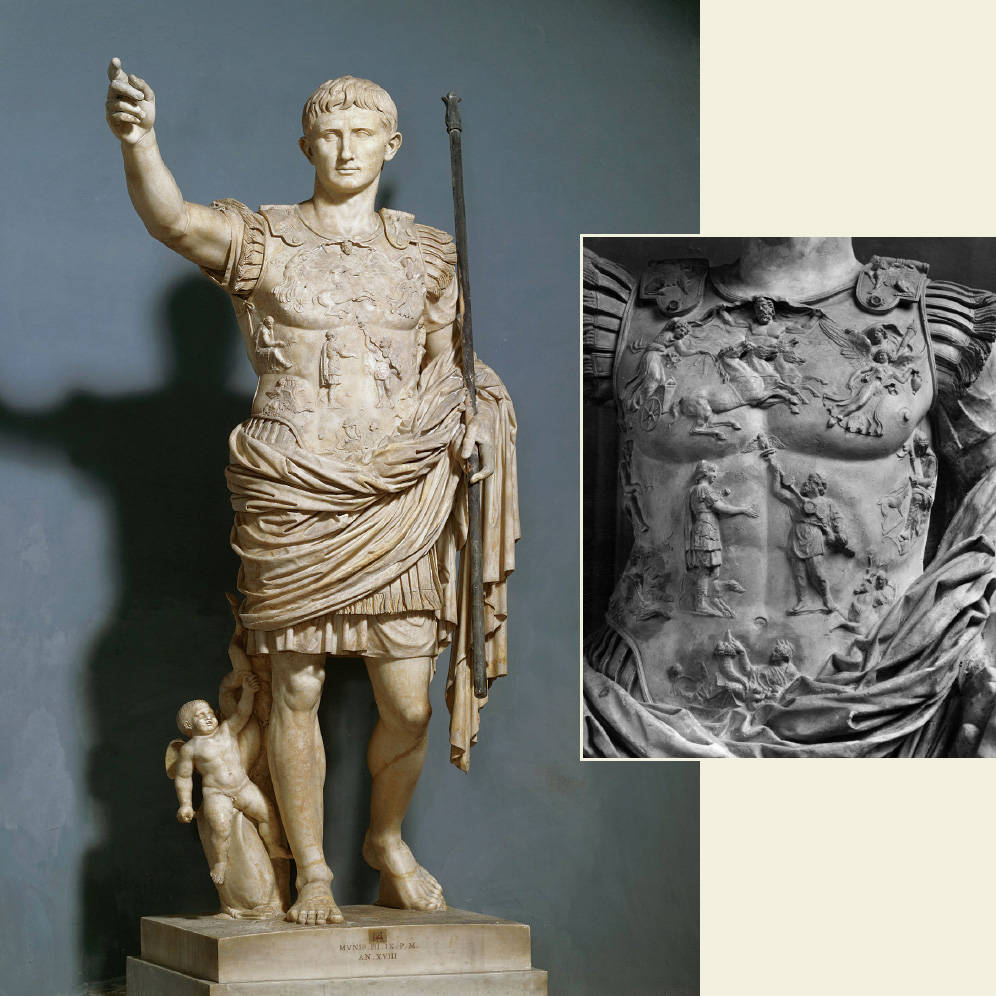Visual Source 3.4
Augustus
Visual Source 3.4, a statue of Augustus, the first of the Roman emperors (r. 27 B.C.E.–14 C.E.) was probably created shortly after his death, though based on a somewhat earlier bronze original. It symbolized a new era of peace and abundance in Roman history, following a century of turmoil and civil war. Here Augustus is “imperator” or military commander, wearing a breastplate (see inset) and with his right arm extended as if addressing his troops. The statue was clearly intended to commemorate the victory of Augustus over the Parthian Empire, centered in Persia or Iran, in 20 B.C.E., a triumph that reversed several earlier Roman defeats. The central relief on the breastplate shows the Parthian ruler (on the right) returning to a Roman military figure the battle standard that the Parthians had seized 33 years before. “I compelled the Parthians to return the spoils and standards of three Roman armies,” Augustus declared, “and humbly to beg the friendship of the Roman people.”21
The rest of the breastplate contains various figures from Roman mythology. At the top left is the sun god Sol driving a chariot, while the top right shows the moon goddess Luna as well as Aurora, the winged goddess of dawn pouring dew from her jug. Between them Caelus, the sky god, spreads out the heavens, and at the bottom of the breastplate the earth goddess cradles two babies and holds a cornucopia overflowing with fruit. Cupid or Eros, riding a dolphin next to Augustus’s right leg, evokes his mother Venus, often said to be an ancestor of Augustus. Notice that the military figure of Augustus is strangely barefoot, a portrayal usually associated with gods and heroes.

Question
What does the statue suggest about the bases of Augustus’s legitimacy as a ruler? What kind of future for the empire does the statue evoke?
Question
Although Augustus resisted being portrayed as divine, the statue is laced with religious imagery. What does that imagery suggest about the way Augustus was coming to be viewed?
Question
What elements of the statue suggest a realistic portrayal of Augustus and which show an idealized image of him? Notice particularly his face and posture. What sensibility is the artist seeking to convey?